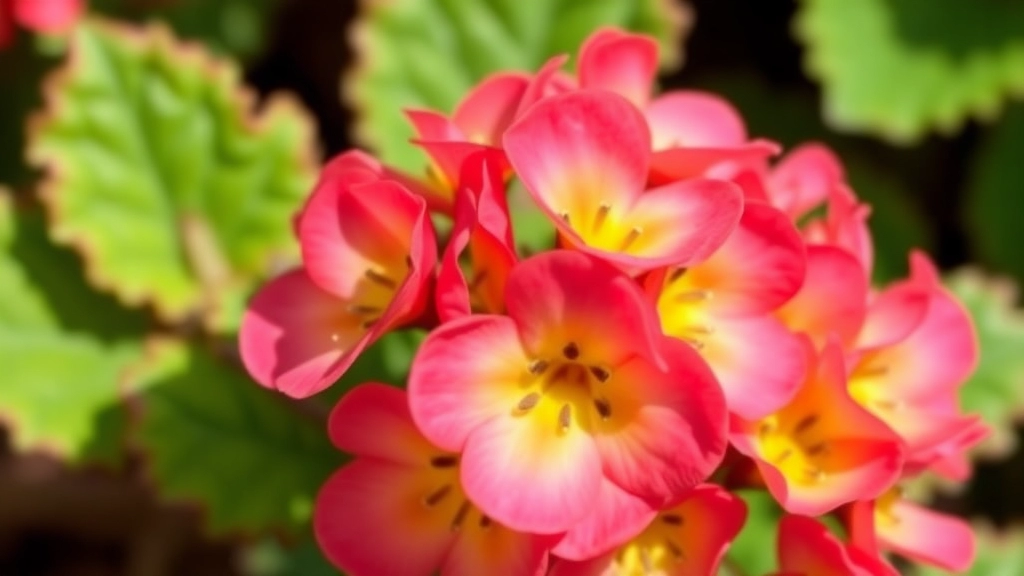Caring for Kalanchoe After Flowering
Wondering how to care for kalanchoe after flowering? You’re in the right place. Once those vibrant blooms fade, it’s crucial to know the next steps to keep your plant thriving. Start by pruning the spent flowers to encourage new growth. Adjust your watering routine—less is often more during this period.
Next, ensure your kalanchoe gets optimal lighting; bright but indirect sunlight works best. Remember to monitor the temperature, keeping it between 15-24°C. Reduce fertilizer use and manage humidity to prevent any common growth issues. With the right care, you can even encourage your kalanchoe to bloom again.
After enjoying a stunning display of blooms, you may find yourself wondering how to best care for your Kalanchoe. Pruning is an essential step in maintaining the health and vitality of your plant post-flowering.
### Why Prune?
Pruning helps to:
– Remove spent flowers, which can prevent the plant from wasting energy on seed production.
– Encourage new growth, leading to a fuller, more vibrant plant.
– Maintain the desired shape and size, preventing it from becoming leggy.
### When to Prune?
Wait until the flowers have completely faded. Ideally, prune in late spring or early summer, allowing the plant to recover and thrive during the growing season.
### How to Prune Your Kalanchoe
1. **Gather Your Tools**: Use clean, sharp scissors or pruning shears to avoid damaging the plant.
2. **Identify Spent Blooms**: Look for wilted flowers and stems that appear dry or brown.
3. **Cut Back**: Trim the spent flowers just above the first set of healthy leaves.
4. **Remove Leggy Growth**: If stems are stretching, prune them back to promote bushier growth.
### Post-Pruning Care
After pruning, ensure your Kalanchoe receives adequate light and water to support new growth. Monitor the plant for any signs of stress or disease. For more detailed care tips, you can refer to the [ultimate guide to flowering Kalanchoe care tips for blooming](https://planthq.org/ultimate-guide-to-flowering-kalanchoe-care-tips-for-blooming/) or explore the [essential Kalanchoe care tips for summer success](https://planthq.org/essential-kalanchoe-care-tips-for-summer-success/).
Adjusting Watering for Post-Bloom Care
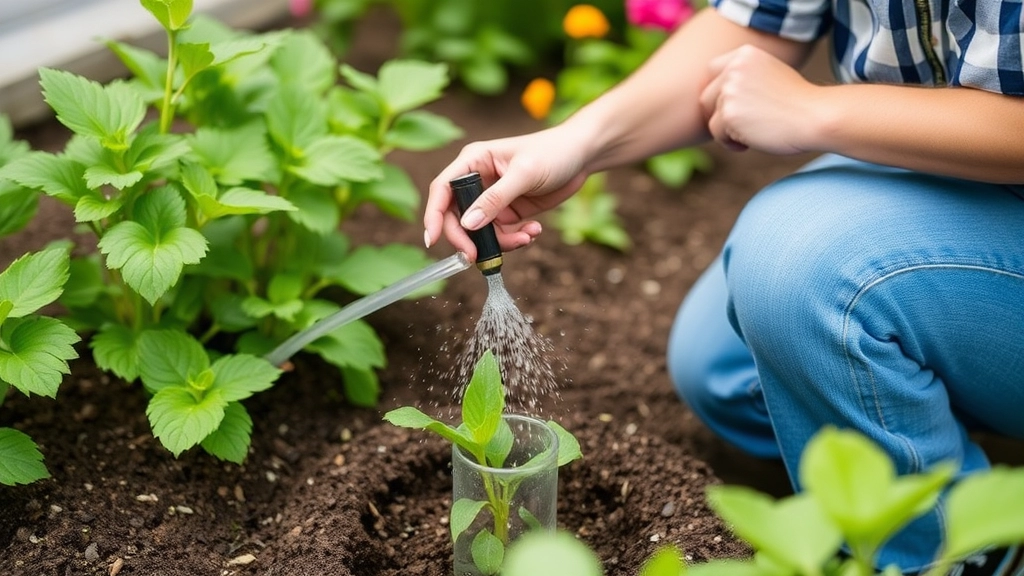
So, you’ve enjoyed the vibrant blooms of your Kalanchoe, and now it’s time to think about what comes next. One of the most important aspects of post-bloom care is adjusting your watering routine.
After flowering, your Kalanchoe doesn’t need as much water as it did when it was in full bloom. Here’s how to nail it:
- Check the Soil: Before watering, poke your finger about an inch into the soil. If it feels dry, it’s time to water. If it’s still moist, hold off.
- Water Sparingly: Kalanchoes are succulents, which means they store water in their leaves. A good rule of thumb is to water every two to three weeks, but this can vary based on your home’s humidity.
- Use Well-Draining Soil: Make sure your potting mix allows excess water to escape. This helps prevent root rot, which is a common issue if the plant sits in soggy soil.
- Observe Your Plant: Yellowing leaves can be a sign of overwatering, while shrivelling leaves might indicate that it’s thirsty. Adjust your watering schedule based on these signs.
- Seasonal Adjustments: In the winter, your Kalanchoe will need even less water. Always be mindful of the season and adjust accordingly.
By fine-tuning your watering habits, you’ll keep your Kalanchoe healthy and happy.
Providing Optimal Lighting Conditions
After ensuring proper watering techniques, the next vital aspect of Kalanchoe care is providing optimal lighting conditions.
Are you wondering why your Kalanchoe isn’t thriving after blooming? One common culprit could be insufficient light.
Key Lighting Tips for Kalanchoe:
- Bright, Indirect Light: Kalanchoes flourish in bright, indirect sunlight. Position them near a window where they can soak up the light without being scorched.
- Avoid Direct Sunlight: Too much direct sun can lead to leaf burn. If you notice the leaves turning brown or crispy, it might be time to move your plant to a more sheltered spot.
- Supplemental Lighting: During the winter months or in darker rooms, consider using grow lights. This can help maintain the plant’s health and encourage new growth.
- Rotate Regularly: To ensure even growth, rotate your Kalanchoe every few weeks. This helps all sides receive adequate light.
- Monitor Growth: Keep an eye on your plant. If it starts stretching towards the light, it may need more exposure.
By providing the right lighting conditions, you’ll set the stage for a healthy Kalanchoe that can bounce back beautifully after its flowering period. For more detailed care instructions, check out our lighting and care tips for Kalanchoe Blossfeldiana. Additionally, if you’re curious about how to make your Kalanchoe bloom again, visit our guide on encouraging Kalanchoe to flower.
Temperature Considerations After Blooming
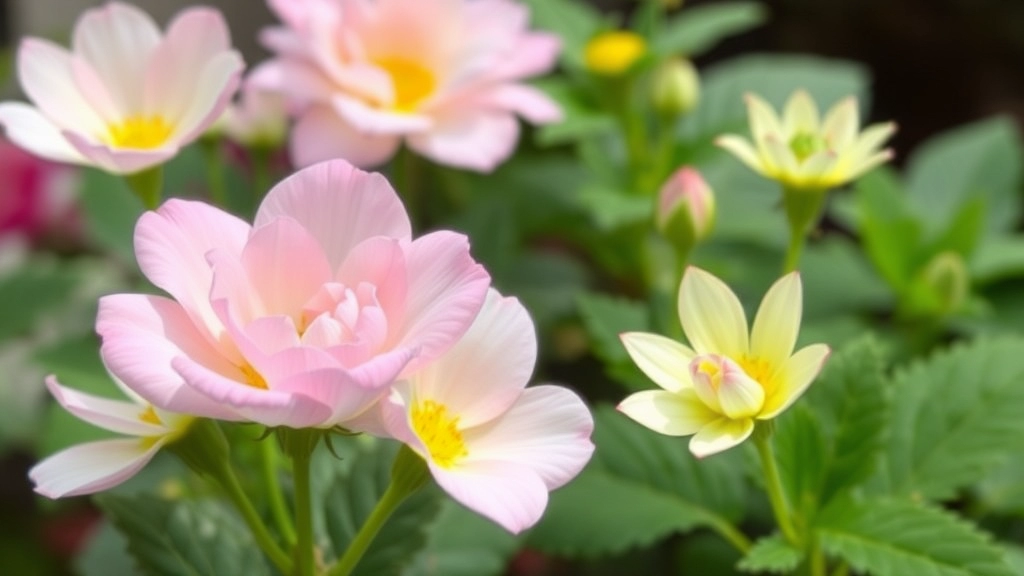
After enjoying the vibrant blooms of your Kalanchoe, you might wonder how to best care for it as it transitions into its post-flowering phase. One crucial aspect to consider is temperature.
Kalanchoe thrives in a warm environment, and maintaining the right temperature is essential for its continued health. Here are some key points to keep in mind:
- Ideal Temperature Range: Aim for temperatures between 18°C to 24°C (65°F to 75°F). This range promotes healthy growth and helps the plant recover from the stress of blooming.
- Avoid Temperature Extremes: Sudden drops or spikes in temperature can shock your Kalanchoe. Keep it away from drafty windows, air conditioning vents, or heating sources.
- Nighttime Temperatures: While daytime warmth is important, ensure that nighttime temperatures don’t drop below 10°C (50°F). This can hinder growth and affect its health.
- Seasonal Adjustments: As seasons change, be mindful of your home’s temperature fluctuations. In winter, consider moving your Kalanchoe to a warmer spot if the indoor temperature dips.
By paying attention to these temperature considerations, you can help your Kalanchoe thrive post-bloom.
Reducing Fertilizer Use Post-Flowering
After enjoying the vibrant blooms of your Kalanchoe, you might wonder how to best care for your plant during its recovery phase. One crucial aspect of post-bloom care is adjusting your fertilization routine.
Why Reduce Fertilizer?
Once your Kalanchoe has finished flowering, it enters a resting phase. During this time, its nutrient needs change significantly. Over-fertilizing can lead to nutrient burn or excessive growth that the plant may struggle to support.
Tips for Reducing Fertilizer Use:
- Cut Back on Frequency: Instead of fertilising every month, consider reducing it to every 6-8 weeks.
- Use a Balanced Fertilizer: Opt for a balanced, water-soluble fertilizer with equal parts nitrogen, phosphorus, and potassium (e.g., 10-10-10).
- Dilute the Concentration: When you do fertilise, dilute the solution to half the recommended strength to avoid overwhelming your plant.
- Monitor Plant Health: Keep an eye on your Kalanchoe. If you notice yellowing leaves or stunted growth, it may be a sign of over-fertilisation.
By following these steps, you can ensure your Kalanchoe receives just the right amount of nutrients as it transitions into its resting phase. For more detailed care tips, check out our Flowering Kalanchoe Care Guide and learn how to Care for Kalanchoe Flower Buds.
How to Encourage Kalanchoe Rebloom
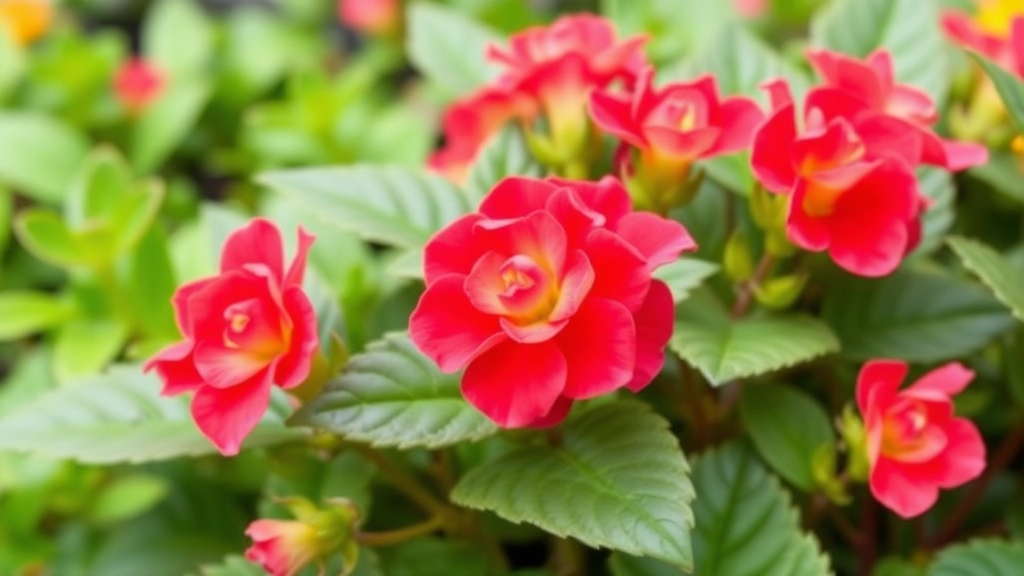
So, you’ve enjoyed the stunning flowers of your Kalanchoe, but now you’re wondering how to coax those beauties back for another show, right?
No worries, it’s totally doable! Here’s how to encourage your Kalanchoe to rebloom after its first round of flowers:
- Prune Wisely: After flowering, snip off the spent blooms and any leggy growth. This helps redirect energy to new buds.
- Light It Up: Kalanchoes thrive in bright, indirect sunlight. Make sure they’re getting at least six hours of light a day to spark those blooms.
- Water Sparingly: Cut back on watering—allow the soil to dry out between waterings. This stress can encourage your plant to flower again.
- Temperature Check: Keep your Kalanchoe in a warm spot, ideally around 20-25°C (68-77°F). A little warmth can do wonders!
- Fertilizer Boost: Once a month, feed your plant with a balanced fertiliser diluted to half strength. This gives it the nutrients it needs to bloom again.
- Darkness Matters: For a few weeks, try giving your Kalanchoe 14 hours of darkness each night. This mimics its natural blooming cycle and can trigger reblooming.
- Patience is Key: Sometimes, it just takes a bit of time. Keep caring for it, and you’ll likely see those vibrant flowers return.
Managing Humidity for Healthy Growth
After ensuring your Kalanchoe receives proper light and temperature, it’s time to consider humidity levels.
Are you noticing your Kalanchoe’s leaves wilting or curling?
Humidity plays a crucial role in the overall health of your plant.
Optimal Humidity Levels:
- Ideal Range: Kalanchoes thrive in humidity levels between 40% to 60%.
- Signs of Low Humidity: If the air is too dry, you might see browning leaf edges or wilting.
Tips for Managing Humidity:
- Use a Humidifier: This is an effective way to maintain stable humidity levels, especially in dry environments.
- Pebble Trays: Place a tray filled with water and pebbles beneath your pot. As the water evaporates, it will increase the humidity around your plant.
- Grouping Plants: Surrounding your Kalanchoe with other plants can create a microclimate with higher humidity.
- Misting: Lightly misting the leaves can temporarily boost humidity, but avoid overdoing it to prevent fungal issues.
- Monitor Conditions: Use a hygrometer to keep track of humidity levels in your home.
Maintaining the right humidity is vital for your Kalanchoe’s health and can significantly affect its growth and blooming potential. For more detailed care instructions, you might find our ultimate guide to growing and caring for succulent Kalanchoe helpful. Additionally, if you notice any issues with your plant, such as black spots on the leaves, our article on causes and solutions for black spots on Kalanchoe leaves provides valuable insights.
Re-potting a Kalanchoe After Flowering
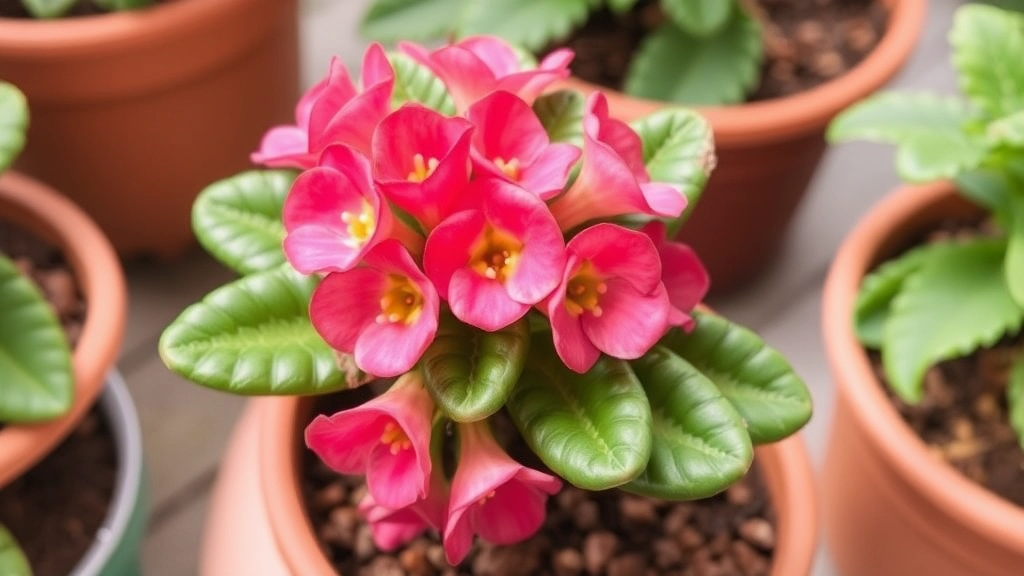
So, you’ve enjoyed the vibrant blooms of your Kalanchoe, and now you’re wondering, “Is it time to re-pot?”
Absolutely! Re-potting is a fantastic way to give your plant a fresh start after flowering.
Here’s why it matters:
- Root Health: After blooming, your Kalanchoe might have outgrown its pot. A new pot means more space for those roots to thrive.
- Fresh Soil: Old soil can become compacted and depleted of nutrients. Fresh soil can rejuvenate your plant.
- Pest Control: It’s a great opportunity to check for any pests or diseases that might have snuck in.
When to Re-pot
- Timing: Aim to re-pot in spring, right after the blooming period.
- Signs: Look for roots peeking through the drainage holes or if the plant seems top-heavy.
Steps to Re-pot
- Choose the Right Pot: A pot that’s 1-2 inches larger in diameter is perfect. Make sure it has drainage holes.
- Prepare the Soil: Use a well-draining cactus or succulent mix. This keeps your Kalanchoe happy and healthy.
- Remove the Plant: Gently ease the plant out of its old pot. Don’t tug too hard; we want to keep those roots intact.
- Inspect the Roots: Trim any dead or mushy roots. Healthy roots should be firm and white.
- Place in New Pot: Add some fresh soil to the bottom, position your Kalanchoe, and fill in around it with more soil.
- Water: Give it a light watering to settle the soil, but don’t soak it.
Aftercare
- Location: Keep your newly re-potted Kalanchoe in a bright spot but out of direct sunlight for a few days.
- Watering: Let the soil dry out before the next watering to avoid root rot.
Handling Common Growth Issues After Blooming
After your Kalanchoe has finished blooming, you may encounter a few growth issues that can be concerning.
Common Problems:
- Leaf Drop: If you notice leaves falling off, this could be due to overwatering or sudden temperature changes.
- Leggy Growth: This often results from insufficient light. Kalanchoe plants tend to stretch toward the light source, leading to elongated stems.
- Pests: Look out for mealybugs or aphids, which can weaken your plant.
Solutions:
- For Leaf Drop:
- Check the soil moisture; allow it to dry out between waterings.
- Ensure the plant is in a stable temperature environment, away from drafts.
- For Leggy Growth:
- Move your Kalanchoe to a brighter spot, ideally where it can receive indirect sunlight for several hours a day.
- Consider rotating the plant regularly to promote even growth.
- For Pests:
- Inspect your plant regularly for any signs of infestation.
- Use insecticidal soap or neem oil to treat affected areas.
By addressing these common growth issues promptly, you can help your Kalanchoe thrive post-bloom. For more detailed tips, check out our guide on caring for Kalanchoe after flowering. Additionally, learn how to manage specific problems like drooping leaves to keep your plant healthy.
Seasonal Care Tips for Indoor Kalanchoe
So, you’ve got your Kalanchoe blooming beautifully, and now you’re wondering how to keep it thriving through the seasons.
What Should I Do for Kalanchoe Care Throughout the Year?
Caring for your Kalanchoe doesn’t stop after the flowers fade. Each season brings its own set of challenges and opportunities. Here’s a simple guide to help you keep your plant in tip-top shape:
Spring: Time to Revive
- Light: As days get longer, ensure your Kalanchoe gets plenty of bright, indirect sunlight.
- Watering: Start to increase your watering frequency as the plant wakes up from dormancy.
- Fertiliser: Use a balanced fertiliser every month to encourage new growth.
Summer: Keep It Cool
- Light: Direct sunlight can be too harsh. Consider moving it to a spot with filtered light.
- Watering: Water more frequently, but always check the soil. It should dry out between waterings.
- Humidity: Kalanchoe prefers lower humidity, so keep it in a well-ventilated area.
Autumn: Prepare for Rest
- Light: Gradually reduce the amount of direct sunlight as days shorten.
- Watering: Cut back on watering as the plant slows its growth.
- Fertiliser: Stop fertilising to allow the plant to rest.
Winter: Minimal Care
- Light: Ensure it still gets some indirect light, but avoid drafts from windows.
- Watering: Water sparingly; the plant needs less moisture during this time.
- Temperature: Keep it in a warm spot, away from cold drafts.
Why Seasonal Care Matters
Adjusting your care routine based on the seasons helps your Kalanchoe stay healthy and vibrant. By paying attention to these seasonal changes, you’re setting your plant up for future blooms and growth. For more detailed care tips, check out our expert guide on Kalanchoe care and learn about the optimal care for Kalanchoe Paddle Plant.
FAQs on How To Care For Kalanchoe After Flowering
How should I adjust my watering routine after my Kalanchoe has finished flowering?
After flowering, reduce the frequency of watering. Check the soil moisture before watering and aim to water every two to three weeks. Make sure to use well-draining soil to prevent root rot.
What is the ideal temperature range for Kalanchoe after it has bloomed?
Maintain a temperature range between 18°C to 24°C (65°F to 75°F). Avoid sudden temperature extremes and ensure nighttime temperatures do not drop below 10°C (50°F).
How can I encourage my Kalanchoe to rebloom?
To encourage reblooming, prune spent blooms, provide bright indirect sunlight, water sparingly, maintain a warm temperature, fertilize monthly, and give the plant 14 hours of darkness each night for a few weeks.
When is the best time to re-pot my Kalanchoe after it has flowered?
The best time to re-pot your Kalanchoe is in spring, right after the blooming period. Look for signs such as roots peeking through drainage holes or the plant becoming top-heavy.
What steps should I follow to re-pot my Kalanchoe?
Choose a pot that is 1-2 inches larger in diameter with drainage holes. Use a well-draining cactus or succulent mix. Gently remove the plant from its old pot, inspect and trim the roots, place it in the new pot, and water lightly to settle the soil.
What aftercare is needed for a newly re-potted Kalanchoe?
Place the newly re-potted Kalanchoe in a bright spot but out of direct sunlight for a few days. Allow the soil to dry out before the next watering to avoid root rot.
How can I tell if my Kalanchoe is overwatered or underwatered?
Yellowing leaves can indicate overwatering, while shriveling leaves might suggest the plant is thirsty. Adjust your watering schedule based on these signs.
Why is it important to use well-draining soil for my Kalanchoe?
Well-draining soil prevents excess water from accumulating, which helps avoid root rot—a common issue for Kalanchoes if they sit in soggy soil.
Can temperature fluctuations affect my Kalanchoe’s health?
Yes, sudden drops or spikes in temperature can shock your Kalanchoe. Keep it away from drafty windows, air conditioning vents, or heating sources to maintain a stable environment.
What type of light does a Kalanchoe need to rebloom?
Kalanchoes thrive in bright, indirect sunlight. Ensure they receive at least six hours of light daily to encourage reblooming.
References
-
How to Grow Kalanchoe Plants Indoors – The Spruce
-
Kalanchoe Care – Gardening Know How
-
Kalanchoe: How to Grow and Care for Kalanchoe Plants – The Old Farmer’s Almanac
